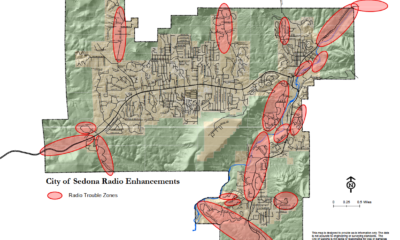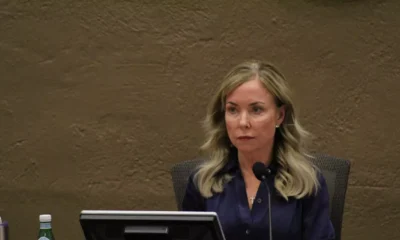City News
Crosswalk Closure Fails to Boost Traffic Flow, Tests Reveal

Traffic management tests in Sedona have yielded intriguing insights, revealing minimal impact from two proposed improvements: closing the State Route 179 crosswalk near Tlaquepaque and installing a signal light at the “Y” roundabout. These findings were shared by city staff and consultant Andrew Baird from Kimley-Horn during updates presented to the City Council on Oct. 22 and Nov. 13.
Community members and councilors have advocated for closing the crosswalk, believing it would alleviate congestion by reducing disruption on State Route 179 and eastbound State Route 89A. An agreement with the Arizona Department of Transportation (ADOT) stipulates that the closure can proceed if the city demonstrates that an alternative pedestrian crossing has made the at-grade crossing unnecessary.
On July 6, the crosswalk was closed from 11 a.m. to 2 p.m. to assess its effect on traffic flow. The report indicated that traffic volume northbound at Tlaquepaque did not significantly change, contradicting expectations. “This indicates that the closing of the crosswalk did not affect throughput at the ‘Y’,” the report stated.
Data from the Sedona Police Department highlighted traffic congestion; southbound SR 89A experienced significant delays shortly after the crosswalk’s closure, a stark contrast to conditions when it remained open. During testing, northbound travel times on State Route 179 increased with the crosswalk closed, suggesting that the closure exacerbated delays rather than alleviating them.
Graphs included in the report illustrated a slight decrease in traffic volume while the crosswalk was shut, returning to previous levels once reopened. Mayor Scott Jablow noted that the empty crosswalk was prompting unnecessary slowing among drivers approaching the intersection.
Reactions from residents have been mixed, with some expressing satisfaction regarding the temporary closure on social media. However, Deputy City Manager Andy Dickey cautioned that a definitive conclusion on the necessity of a full closure is still pending, with further analysis continuing until October 2025.
Discussions also revolved around creating pedestrian overpasses, a suggestion gaining traction among council members, though a recent budget survey revealed 80% of residents opposed them. Concerns about the aesthetics and practicality of such projects remain. “I think it would be good to start looking at that,” Dickey said, indicating that overcoming community resistance would be necessary.
Simultaneously, the Kimley-Horn study explored the potential effect of installing traffic signals at the “Y” roundabout. Results from simulation tests showed alterations in travel times for both SR 89A and SR 179, suggesting that prioritizing northbound traffic could potentially improve flow.
Future experiments will include testing a portable signal during the Thanksgiving holiday. Baird noted that effective signalization could help manage traffic surges and optimize flow beyond just serving vehicles, potentially aiding transit as well. Meanwhile, the city is contemplating signalization at current roundabouts and ensuring that all signals interact efficiently.
Concerns remain about the reliability of traffic lights, as local temperatures often impair their functionality. Dickey acknowledged the necessity of minimizing pedestrian disruptions at roundabouts to enhance overall traffic efficiency, galvanizing the ongoing dialogue about sedimentary solutions to Sedona’s traffic challenges.


















